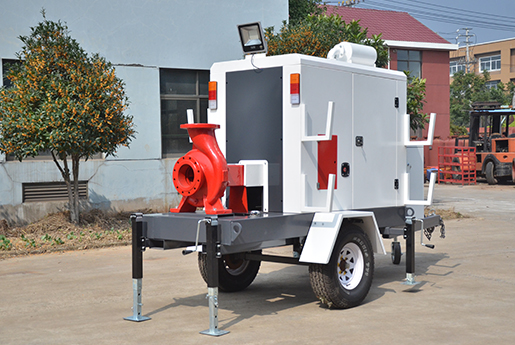-
 Nov 06, 2023Learn about the advantages and uses of mobile pump trucksMobile pump trucks, also known as mobile pump units or mobile pumping systems, are versatile machines equipped with pumps and various components that can be easily transported to different locations. They offer several advantages and have a wide range of uses in various industries. Here are some of the advantages and common uses of mobile pump trucks:
Nov 06, 2023Learn about the advantages and uses of mobile pump trucksMobile pump trucks, also known as mobile pump units or mobile pumping systems, are versatile machines equipped with pumps and various components that can be easily transported to different locations. They offer several advantages and have a wide range of uses in various industries. Here are some of the advantages and common uses of mobile pump trucks:
View details -
 Nov 03, 2023Fire Pumps and Community Safety: The Importance of Developing Fire AwarenessFire pumps play a crucial role in ensuring community safety by providing an essential resource for firefighting. Alongside this important equipment, developing fire awareness within a community is equally vital for preventing and mitigating fire-related emergencies. Let's explore the significance of both fire pumps and fire awareness in enhancing community safety.
Nov 03, 2023Fire Pumps and Community Safety: The Importance of Developing Fire AwarenessFire pumps play a crucial role in ensuring community safety by providing an essential resource for firefighting. Alongside this important equipment, developing fire awareness within a community is equally vital for preventing and mitigating fire-related emergencies. Let's explore the significance of both fire pumps and fire awareness in enhancing community safety.
View details -
 Nov 03, 2023The role and challenges of fire pumps in urban planningFire pumps play a crucial role in urban planning to ensure the safety and protection of buildings, infrastructure, and the public in case of fires. These pumps are an integral part of a city's fire protection system and are responsible for supplying water to fire sprinkler systems, standpipes, and hoses in high-rise buildings and other structures. Here are the key roles and challenges associated with fire pumps in urban planning:
Nov 03, 2023The role and challenges of fire pumps in urban planningFire pumps play a crucial role in urban planning to ensure the safety and protection of buildings, infrastructure, and the public in case of fires. These pumps are an integral part of a city's fire protection system and are responsible for supplying water to fire sprinkler systems, standpipes, and hoses in high-rise buildings and other structures. Here are the key roles and challenges associated with fire pumps in urban planning:
View details -
 Nov 02, 2023The critical role of fire pumps in industrial and commercial applicationsFire pumps play a critical role in industrial and commercial applications by providing reliable and pressurized water for fire protection systems. Their importance cannot be overstated, as they are essential for safeguarding people, property, and assets in various settings. Here are some key aspects of their critical role in industrial and commercial applications:
Nov 02, 2023The critical role of fire pumps in industrial and commercial applicationsFire pumps play a critical role in industrial and commercial applications by providing reliable and pressurized water for fire protection systems. Their importance cannot be overstated, as they are essential for safeguarding people, property, and assets in various settings. Here are some key aspects of their critical role in industrial and commercial applications:
View details -
 Nov 02, 2023Fire pump: the primary tool for building fire protectionA fire pump is indeed a critical component of a building's fire protection system. It is designed to provide a reliable source of pressurized water to fire sprinkler systems, standpipes, and hose systems in case of a fire emergency. Fire pumps are typically used in larger buildings, industrial facilities, and high-rise structures where the water supply from the municipal system may not provide sufficient pressure to combat a fire effectively.
Nov 02, 2023Fire pump: the primary tool for building fire protectionA fire pump is indeed a critical component of a building's fire protection system. It is designed to provide a reliable source of pressurized water to fire sprinkler systems, standpipes, and hose systems in case of a fire emergency. Fire pumps are typically used in larger buildings, industrial facilities, and high-rise structures where the water supply from the municipal system may not provide sufficient pressure to combat a fire effectively.
View details -
 Nov 01, 2023Fire scenes: the role and challenges of fire pumpsFire pumps play a critical role at fire scenes, providing the necessary water flow and pressure to suppress fires effectively. However, they also face several challenges in the demanding environment of a fire scene. Here's an overview of the role and challenges of fire pumps in fire scenes:
Nov 01, 2023Fire scenes: the role and challenges of fire pumpsFire pumps play a critical role at fire scenes, providing the necessary water flow and pressure to suppress fires effectively. However, they also face several challenges in the demanding environment of a fire scene. Here's an overview of the role and challenges of fire pumps in fire scenes:
View details

.png)
.png)

.png)


